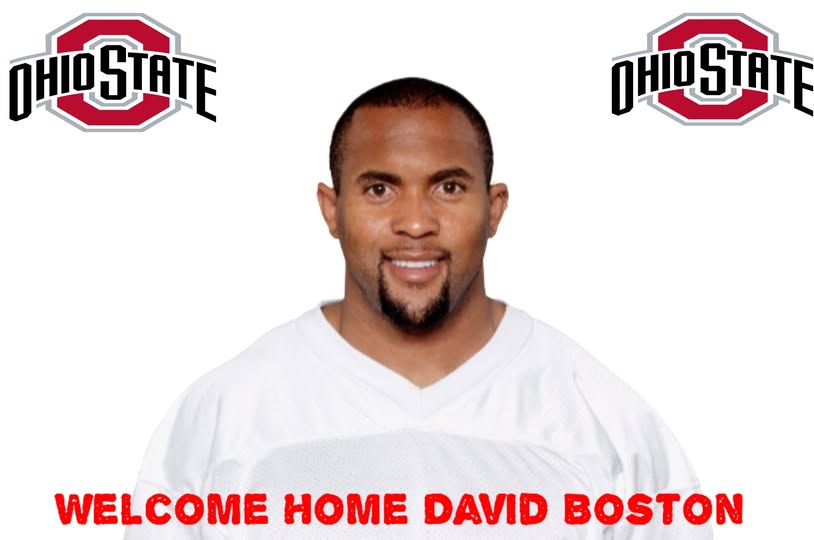Sure! Here’s a 1500-word article in a fluid, narrative style without subheadings, as requested:
In a stunning turn that has captivated fans of college football and reignited the spirit of a proud Buckeye nation, David Boston is set to return to Ohio State University—not as a player, but as a leading figure on the coaching staff. The announcement, which broke earlier this week, has sent ripples across the college football landscape, drawing attention not only for Boston’s history with the program but for the broader implications of such a return. Once a standout wide receiver and an icon in scarlet and gray, Boston now steps into a new role, carrying with him a wealth of experience, a deep understanding of the game, and a burning passion for the program that helped shape his career.
David Boston’s name still resonates in the annals of Ohio State football history. During his collegiate years, he left an indelible mark on the program, electrifying fans with his athleticism, route-running, and clutch performances. A former All-American and a central figure in the Buckeyes’ offense during the late 1990s, Boston’s defining moment arguably came in the 1997 Rose Bowl, when he hauled in the game-winning touchdown reception against Arizona State. That play, frozen in time, remains one of the most iconic moments in Ohio State football history. It cemented his status as a Buckeye legend and launched him into the national spotlight. He finished his college career with 191 receptions for 2,855 yards and 34 touchdowns, all program records at the time.
Following his stellar college career, Boston entered the NFL with high expectations. Selected eighth overall in the 1999 NFL Draft by the Arizona Cardinals, he made an immediate impact and earned a Pro Bowl selection in 2001. Known for his combination of size, speed, and strength, he was, for a time, one of the most physically imposing wide receivers in the league. But his professional journey was also marked by challenges—injuries, off-the-field issues, and the burden of living up to lofty expectations eventually took their toll. After stints with the San Diego Chargers, Miami Dolphins, and brief appearances on other rosters, Boston’s playing days ended quietly, far removed from the promise and fanfare that had accompanied his entry into the league.
For years, Boston remained out of the spotlight. He rarely gave interviews, and fans could only speculate about his post-football life. That’s why the news of his return has come as such a surprise—not just because of the time that has passed, but because it signals a personal transformation. Boston’s journey from the gridiron to the sidelines is more than a change of roles; it is a story of redemption, resilience, and a rekindled love for the game. Sources close to the program have confirmed that he will take on a major role working with Ohio State’s wide receivers, mentoring a group that has already garnered national praise for its talent and depth.
Those who have spoken with Boston in recent weeks describe a man humbled by experience but invigorated by purpose. “He’s come full circle,” said one former teammate. “This isn’t just about football for him—it’s about giving back, about guiding the next generation through the same fire he once walked through.” That sentiment seems to resonate throughout the Ohio State community. For head coach Ryan Day and his staff, the addition of Boston is not merely symbolic. It’s a strategic move, one that taps into the heart of the Buckeye ethos while adding a layer of elite insight to the coaching room.
Boston brings with him a unique perspective. He knows what it takes to excel at the collegiate level and how to transition to the pros. He knows the pressure, the expectations, the distractions, and the pitfalls. More importantly, he understands the weight of wearing the Ohio State uniform—not just as a player, but now as a leader charged with shaping young men. In today’s college football landscape, where Name, Image, and Likeness (NIL) deals, transfer portals, and social media have changed the culture dramatically, a figure like Boston provides not only football expertise but critical life mentorship.
One current player, speaking anonymously, said the team is “fired up” about the hire. “We know who David Boston is. We’ve watched the highlights, seen the Rose Bowl catch. Having someone like that come in—someone who’s been through it all—it just makes you want to go harder. He’s a Buckeye through and through.” That energy has already begun to permeate through spring practices. Boston has been spotted on the field, hands-on, coaching routes, breaking down film with receivers, and working closely with players to refine their technique.
Ohio State, a program known for its strong wide receiver lineage—from Cris Carter to Terry Glenn to Michael Thomas and more recently Marvin Harrison Jr.—now looks to Boston to continue that tradition. The move also highlights the university’s ongoing commitment to bringing former players back into the fold, reinforcing the idea that the Buckeye brotherhood is more than just a slogan. It’s a living, breathing network, where former stars can come home and contribute in meaningful ways.
While there may be skeptics—those who question Boston’s limited formal coaching experience or worry about past controversies—most within the program see this as a low-risk, high-reward decision. Boston’s familiarity with the culture, his technical acumen, and his personal journey of growth have all been cited as reasons for confidence. Ohio State’s athletic department has also indicated that Boston has undergone extensive preparation for this role, including mentorship under seasoned coaches and participation in off-season training programs designed for player development professionals.
As the Buckeyes look ahead to a season filled with high expectations, Boston’s presence adds a new dimension. In the ultra-competitive Big Ten and with national title aspirations perennially in play, any edge can make a difference. Having a coach who not only understands elite performance but has lived it—who can speak from personal experience about the path from high school standout to college star to NFL pro—offers players a mentor who is both relatable and aspirational.
Fans, too, have embraced the news with enthusiasm. Social media buzzed in the wake of the announcement, with highlight reels of Boston’s playing days making the rounds and tributes pouring in from alumni and long-time supporters. For many, it’s a nostalgic reminder of a golden era in Buckeye football. For others, it’s a sign of a new chapter—one where legacy and future walk hand in hand.
Boston himself has remained relatively reserved in public statements, but in a brief press release, he expressed gratitude and excitement. “Ohio State has always been home to me. The lessons I learned here shaped my life, and I’m honored to be back in a position to teach, guide, and give back to this incredible program. My goal is to help these young men become the best players and people they can be. That’s what it means to be a Buckeye.”
His words carry weight, not just because of his legacy, but because of the authenticity with which he speaks. This is not a publicity stunt or a ceremonial role. It’s a commitment—from Boston to the program and from the program to a man who has traveled a long and winding road back to where it all began.
As the season nears and excitement builds around Columbus, all eyes will be on the wide receivers room—not just for the explosive plays and elite talent, but for the imprint of a legend reborn. David Boston’s return isn’t just a story about football; it’s about coming full circle, about redemption, and about the enduring power of home.
Let me know if you’d like a version with subheadings, additional quotes, or adapted for a specific publication style.



